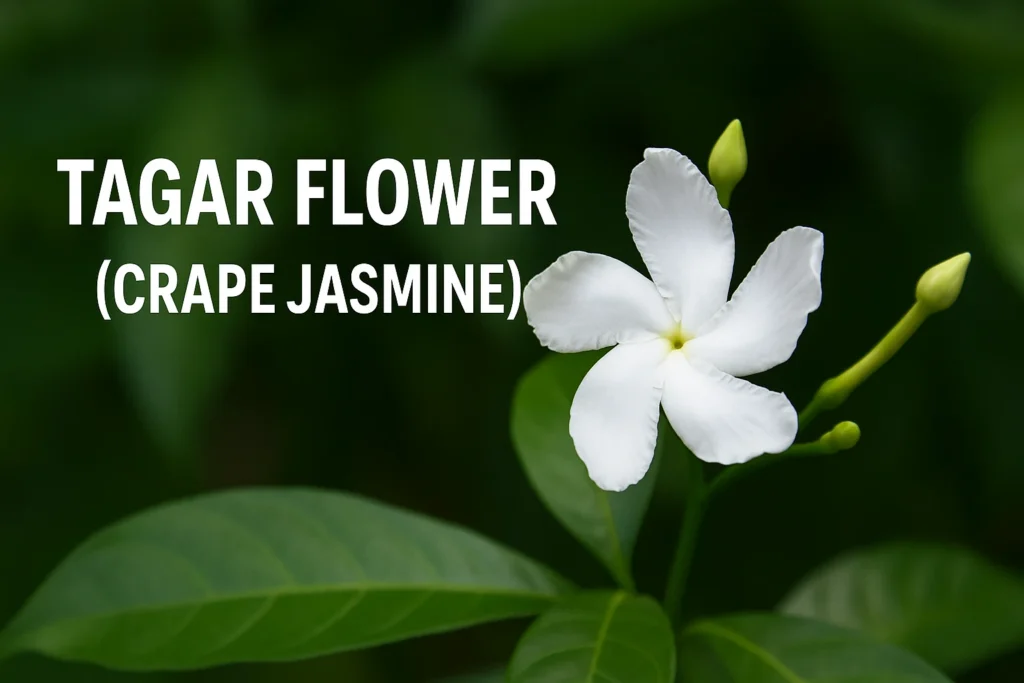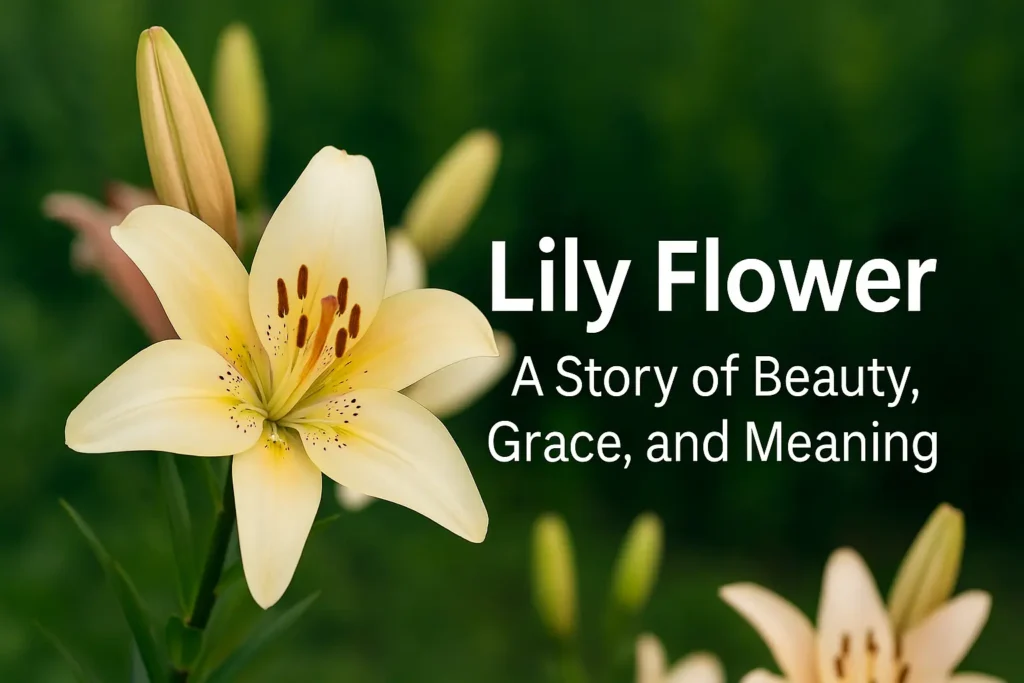When you walk past a garden and catch a whiff of a soft, sweet fragrance from delicate white blossoms, there’s a good chance it’s the tagar flower. Also known as crape jasmine, this plant is loved not just for its looks, but for its various uses too—both decorative and medicinal.
Let’s explore this lovely plant together—from its colors and types to how it can help your health and add charm to your space.
What is the Tagar Flower?
Let’s start with the basics. The tagar flower, commonly known in English as crape jasmine flower, is a tropical, evergreen shrub or small tree found mostly in India and Southeast Asia. Its scientific name is Tabernaemontana divaricata. Though the most common variety has pure white blooms, you’ll also find it in other colors like pink, red, and yellow.
The plant is admired for its star-shaped blossoms and glossy green leaves. It’s also widely known for its pleasant fragrance and is often grown in home gardens, temples, and public parks.
Types of Tagar Flower You Should Know
There’s more than just one kind of tagar. Each variety has its own charm.
White Tagar Flower
This is the classic crape jasmine you see in many Indian homes and temples. The pure white petals are soft and have a calming fragrance. It’s also the one most commonly used to make tagar flower garland for religious rituals and decorations.
Red Tagar Flower
Less common but equally stunning, the red tagar flower is eye-catching and bold. It adds a pop of color to any garden and symbolizes love and vitality.
Pink Tagar Flower
The pink tagar flower offers a delicate blush tone that makes it a favorite for ornamental planting. It’s elegant and feminine, often chosen for landscaping in peaceful spaces.
Double Tagar Flower
The double flowering crape jasmine has layered petals that make the blooms look fuller and fluffier. It’s visually rich and often mistaken for gardenias from a distance.
Yellow Tagar Flower
Rare but radiant, the yellow tagar flower brings sunshine to your garden. It’s believed to uplift mood and energy, much like marigolds.
China Tagar Flower/Chinese Tagar Flower
The china tagar flower, also known as chinese tagar flower, refers to a variant that often has slightly different petal shapes or sizes and is adapted to subtropical climates. These are sometimes hybrid varieties with a twist in bloom style or fragrance.
Tagar Flower Plant: Easy to Grow, Easy to Love
If you’re thinking about adding this plant to your garden, you’ll be happy to know that the tagar flower plant is low-maintenance and grows well in pots, open soil, and even hedges.
Growing Conditions
- Soil: Well-drained loamy soil works best.
- Watering: Moderate watering; don’t let it get too soggy.
- Sunlight: Prefers full sunlight but can tolerate partial shade.
- Climate: Tropical to subtropical; avoid frost conditions.
Plant a tagar flower tree in your garden corner or line your driveway with the shrubs, and you’ll have a year-round green attraction with seasonal flowers.
The Many Uses of Tagar Flower
The tagar flower uses go way beyond aesthetics.
1. Religious and Cultural Use
In India, the tagar flower is often used in religious offerings. Its divine fragrance and pure appearance make it ideal for temple rituals and garlands.
2. Medicinal Benefits
Now here’s where it gets even more interesting. The crape jasmine medicinal uses have been acknowledged in Ayurveda and traditional medicine for centuries.
- Anti-inflammatory: The leaves and milky sap are used for treating swelling and joint pain.
- Wound Healing: The crushed leaves can be applied to minor cuts.
- Antimicrobial: Some compounds in the plant help fight bacteria and fungi.
Always consult a medical expert before using it for treatment, but it’s fascinating how nature builds such power into something so beautiful.
Let’s Talk About the Leaves and Buds
Even the non-flowering parts of this plant are worth attention.
Crape Jasmine Leaves
These glossy green crape jasmine leaves have their own charm and medicinal value. They’re used in home remedies for skin issues and sometimes as a cooling agent.
Tagar Flower Buds
The tagar flower buds are often plucked early for temple offerings or used in garlands. They’re fragrant even before they bloom and hold symbolic meaning in various cultures.
Tips to Keep Your Tagar Happy
Here are a few extra tips if you’re planning to grow your own:
- Prune regularly to maintain a neat shape.
- Fertilize once a month during flowering season.
- Watch out for pests like mealybugs and aphids—use neem oil as a natural repellent.
You can plant it next to other fragrant blooms like the Kumudini flower or sampangi flower plant for a heavenly-smelling garden corner.
A Plant That’s More Than Just Pretty
Crape jasmine is not just another pretty flower. It’s a symbol of calm, tradition, and healing. Whether you grow the tagar flower plant for its spiritual significance, its visual beauty, or its health benefits, you’ll find yourself falling in love with it over and over again.
It fits beautifully in any type of garden, pairs well with plants like the parijata flower, and complements the aesthetic of any flower-loving soul who might already enjoy keeping a lily flower plant at home.
Final Thoughts:
If you’ve been looking for a flower that combines grace, usefulness, and easy care, the tagar flower (crape jasmine) ticks all the boxes. It’s not flashy like roses or dramatic like orchids, but it carries a quiet charm that endears itself to everyone who encounters it. Whether you’re a gardening newbie or a seasoned plant lover, tagar brings peace and positivity to your space. Grow it, enjoy its scent, and maybe even try out its healing properties—with proper guidance, of course.
Let nature’s simplicity surprise you.









